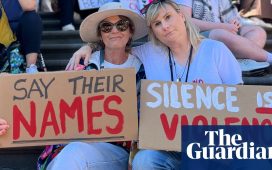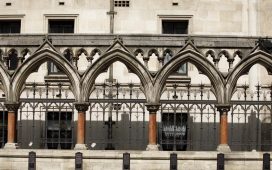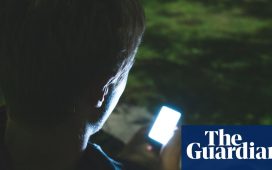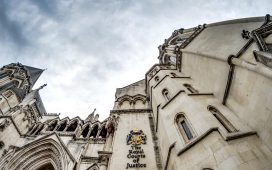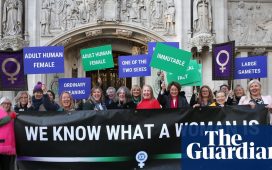It was 10 days into the journey when the boat sprang a leak. Dozens of men, women and children were crowded on to a fishing boat, all Tamils fleeing persecution in their home country, Sri Lanka. They had hoped to reach sanctuary in Canada.
Instead, on 3 October 2021, as their vessel began to sink, they were spotted and rescued by British navy ships, then taken to the secretive US-UK military base on the remote island of Diego Garcia in the Indian Ocean.
For those on board, the rescue brought relief. “When I saw the British flag, I thought to myself: ‘Now we are safe,’” says one. Little did they know that years of purgatory lay ahead.
In many ways, the island – with its pure white sands, palm trees and azure seas – looks a lot like paradise. It is home to green turtles, coconut crabs and wild donkeys tame enough to be petted.
But for the 60 asylum seekers who are stuck here, 16 of whom are children, that idyll could not be further from their reality.
Initially, the group were told their boat would be repaired in a matter of days and that they could continue on their journey to Canada. “I was told we would be sent to a safe country,” says one passenger. “That was the best day of my life. I arrived only in the clothes I was wearing and had to wear the same ones for a fortnight. I soon realised what was happening to me was the opposite of what I expected.”
Almost three years after their arrival, they are still stuck.
Living in a makeshift tented camp the size of a football pitch, surrounded by a 7ft-high metal fence, their movements on the island are heavily restricted. “I’ve been put in a prison on this island although I have committed no crime,” says one. “My mental state is deteriorating. I live in a body that has no life inside it.” Their tents, which flood when it rains, are infested with rats, mice and cockroaches. “We cohabit with the rats,” says one mother. “They taste the food on our plates; climb on top of our children when they are sleeping and bite us.”
The Tamils have only been able to leave their encampment for visits to the doctor, the dentist or limited beach trips. In the island’s downtown area, there are bowling alleys and shops, subsidised bars where military personnel dance at foam parties or play pool and darts. There are softball pitches, tennis courts and parks. “One three-year-old child deliberately broke his teeth so he could go out to the dentist and get soft food,” says one person in the camp. “He wanted to eat a banana, which we don’t usually get.”
Why have they been left like this for so long? And why has a safe third country to which they can be sent still not been identified? Nobody has ever tried to claim asylum in Diego Garcia before – and the territory is itself disputed. Located halfway between the east coast of Africa and the west coast of Indonesia, the UK asserts ownership of the island, while Mauritius, to the south-west of Diego Garcia, says it owns it. Britain colonised the island in the late 18th century, and, in 1965, created the British Indian Ocean Territory (Biot), which also includes the other 57 islands of the Chagos archipelago. It is governed by the Foreign, Commonwealth and Development Office (FCDO) in London – but is constitutionally separate from the UK. The UK leases the island to the US and 3,000-5,000 military personnel are stationed there. After 9/11, US bombers launched attacks on Afghanistan from the island; during the 2003 invasion, the base was used to attack Iraq.
Legal teams acting on behalf of the asylum seekers say the lack of resolution is excruciating for those stuck in limbo. There was a glimmer of hope in March 2022, when Liz Truss as foreign secretary wrote a letter to the then prime minister Boris Johnson warning that many of the trapped asylum seekers were suicide risks and recommended that they were brought to the UK for processing. More than two years later, this has not happened.
Last November, a UNHCR delegation visited the camp. Its findings were that the detention of 16 children was “deeply troubling”. There are documented incidents of child sexual abuse and parents are afraid of the men who loiter around the school tent, putting their children at risk. Until July 2023, single men were not separated from families in the accommodation tents.
One child told the delegation they were sad when they saw a guard dog roaming around outside the fence, with more freedom than them. “Our expectations have been demolished,” says another mother living in the camp. “We are used to promises being made but not kept. Our children get exhausted from even a small amount of playing. They have boils on their knees and elbows, which the doctors say are from malnutrition. There are no clothes for them. We fear we cannot protect our children from sexual abuse. This is a toxic place for them to grow up.”
The report concluded that the conditions did not meet international standards for refugees and that holding them in a closed accommodation camp amounted to “arbitrary detention”. It suggested their urgent relocation – with some moved to the UK.
But for those stuck in this camp, the administrative jostling over who is responsible for them makes little difference. All they know is that they are stuck in limbo. “I went on hunger strike for five days because nothing is happening,” says one man. “We would be grateful to live in any part of the world where we can live peacefully. I want my freedom and my future.”
“Is it our fault we were born as Tamils in Sri Lanka? We never expected we would be caught in this cage,” says one female asylum seeker. “Sometimes I think that if we as parents did something to ourselves, would that allow our children to be taken off the island? We hear the children talking among themselves, saying: ‘We are going to die here.’”
Margaret Obi, acting judge of the supreme court of Biot, has taken the unusual step of agreeing that a claim by the asylum seekers – that they are being unlawfully detained on Diego Garcia – should be heard on the island. At the moment, the children and adults are stuck: unable to return to their home country where they say their lives are in danger, or forward to any safe country.
Guy Atoun, a caseworker at Duncan Lewis solicitors, which is representing some of the asylum seekers, says: “The UK government’s inability to accommodate our clients in humane conditions in Diego Garcia, while insisting that they cannot be transferred elsewhere, is indicative of a flawed policy objective that fails to reckon with the basic human rights of men, women and children.” FCDO sources said that the welfare and safety of asylum seekers on Diego Garcia is a top priority.
Meanwhile, the asylum seekers are pinning all their hopes on their legal teams to get them off the island and to a place of safety where their troubled children can thrive. As one says: “We hope we will be allowed to escape from hell.”

